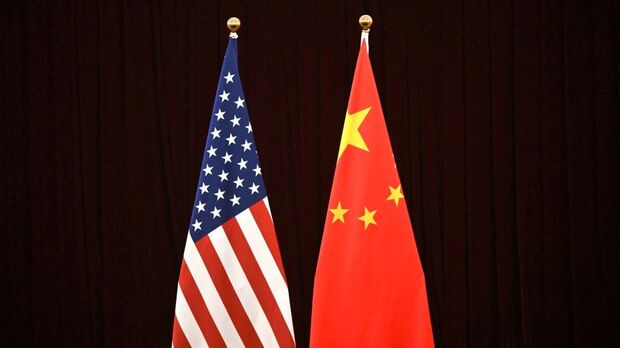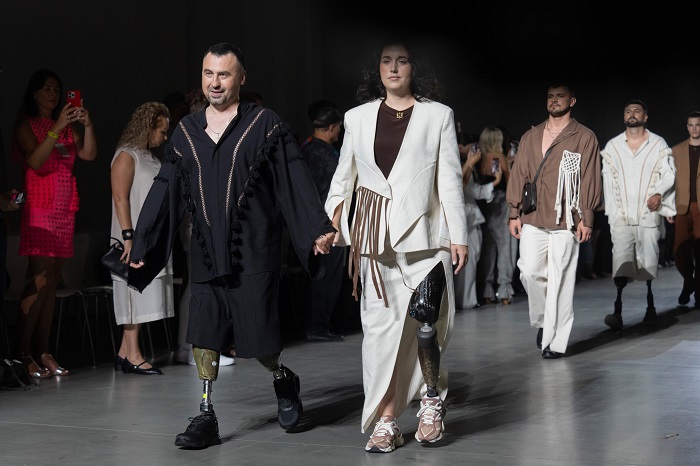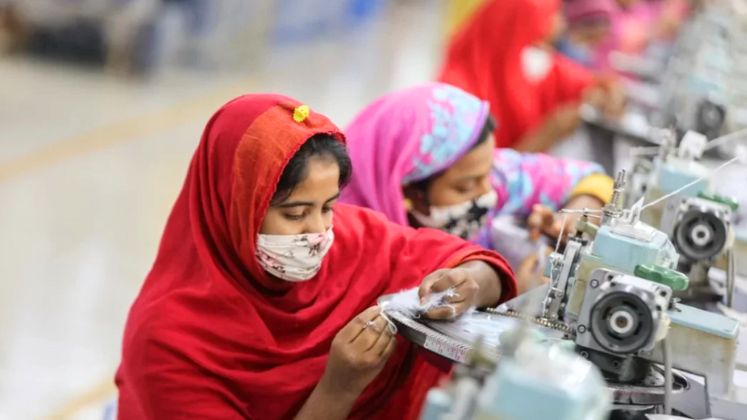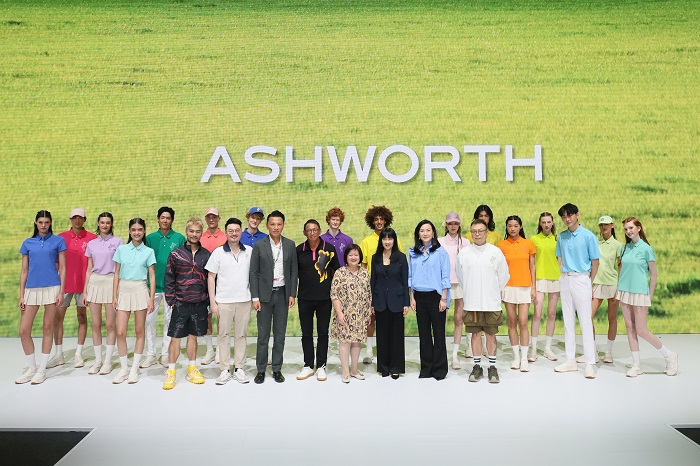FW
Cashmere World Forum highlighting cashmere and fine fibres will be held on September 25-26, 2014, at Hong Kong Convention and Exhibition Centre for sourcing, branding and retailing cashmere. Industry experts from Italy and Thailand would be discussing the latest trends and innovation on cashmere retailing.
DKNY designer will make a presentation on building a cashmere collection covering research, concept development, material sourcing, experimentation, translating designs into specs to final production. Latest developments in the cashmere and fine fibres industry would be showcased during the event. Industry experts will explain how latest science and technology methods come to the rescue of threatened cashmere and fine fibre production. Visitors would be introduced to the latest cashmere self-cleaning capabilities development, genetic research, cloning, nano-cashmere and treatments of cashmere fibres.
Topics like whether there is a need for a cashmere quality mark, how are other fine fibres doing in the market and others would be contemplated by industry experts coming from Australia, China and South Africa. They will share insights about their findings on the comfort properties of knitwear – from the view of consumer and instrumental measurement.
www.cashmereworldfair.com
The IAF and Inexmoda have announced that Adriano Goldschmied will be speaking at the 30th IAF Word Fashion Convention in Medellín, Colombia. Goldschmied, known as 'the godfather of jeans' is the creator of iconic denim brands Diesel, Replay and AG Adriano Goldschmied and adviser to many other denim brands.
With his presence, the IAF Convention would be able to highlight the denim case to its global audience in the best possible way. Denim brands are leading examples in international expansion through real value creation. Denim brands have captured the imaginations of billions of consumers across the world, through branding as well as love of craftsmanship and investment in environmental improvements. Goldschmied will speak on ‘innovation & future of denim’. Mariette Hoitink, who heads the Amsterdam initiative of ‘House of Denim’, will use this example to show how Goldschmied’s advice can best be translated into a Colombian denim infrastructure. The IAF and Inexmoda are holding the convention on September 30 and October 1, in Medellín, Colombia.
Iafnet.eu
Cotton exports from India have come to a standstill as prices of the commodity here are higher than abroad. Indian exporters have now come under huge financial stress. India is the second largest exporter of cotton after the US. In the past three months, international prices of cotton have fallen 25 per cent. As a result, Chinese importers can secure cotton of better quality and at a lower price from other countries. Demand for Indian cotton has also fallen because China has asked its mills to import only 20 per cent of their requirements.
Demand from Chinese mills has shifted in favor of the long-staple, finer quality from Brazil. As of now, the unsold cotton already sent to China by Indian exporters is lying at warehouses in Chinese ports. Initially, Indian exporters had thought owing to El Nino the cotton crop might be hit and, therefore, prices might rise. However, that hasn’t happened. And most exporters aren’t in a position to pay ginners for the cotton bought from them. It’s estimated the losses to ginners and exporters may run to several hundred crores of rupees.
Several Vietnam and Bangladesh mills have bought Indian cotton to convert it into yarn and export to China. However, as yarn imports by China have fallen, these countries will also cut Indian cotton imports.
Woolmark presented its latest washable wool campaign and showcased a selection of merino wool trends, industry services and innovations at the recent Spinexpo Shanghai held September from 2 to 4, 2014. This year marks the 50th anniversary of the Woolmark brand.
Spinexpo is an event for fibers, yarns, knitwear and knitted fabrics, socks, laces, labels and technical textiles. The recent event hosted 225 exhibitors from 15 countries. Designers’ creations showcased for trimmings, embellishments, mixed media of fabrics, foiling and printing that can impact and transform denim. The products exhibited include cashmere and wool sweaters, gloves, hosiery, scarves and ties, polyester, polypropylene, acrylic and viscose fibers. Students exhibited designs of fabrics and garments, based on emerging trends and concepts, using yarns from a variety of spinners.
South Africa did a presentation of mohair. This is a fiber that is attracting global interest. South Africa is the biggest producer of this fiber. Known as the diamond fiber, mohair is in high demand due to the change in consumer trends.
www.spinexpo.com/shanghai/
The International Labour Organisation (ILO) and Hennes &Mauritz (H&M), the international Swedish clothier, entered a partnership to promote sustainable global supply chains in the garment industry. The agreement will include joint work on industrial relations and wages, training and skills development in factories, H&M is sourcing from and the strengthening of employers’ and workers’ organisations in the global garment industry.
The partnership between ILO and H&M goes back back to 2001, when H&M joined the ILO Better Factories Program in Cambodia. In 2013, the cooperation was expanded to specifically address industrial relations and wages in the country, including actions at the governance level. Another important collaboration began in 2013 with a training and skills development project in Bangladesh. The project aims to improve the quality of work and productivity in factories, and to enable workers to document and have their skills formally recognised.
The partnership is intended to establish a positive and innovative model for other brands and crate a global alliance to promote the ILO’s Decent Work Agenda in the supply chain of the global garment industry.
www.ilo.org
www.hm.com
Exports of Bangladesh readymade garments (RMG) to the US fell by 1.75 per cent to $2.94 billion during the first seven months of 2014 compared to the same period of last year, reveals data from the US Department of Commerce. On the other hand, apparel exports to the US by Vietnam, one of the main competitors of Bangladesh and India grew by 13.75 and 5.76 per cent respectively during the period.
Bangladeshi exporters attributed the decline to tragic industrial incidents including the Rana Plaza building collapse and Tazreen fire and political turmoil. Following the political turmoil last year, a large number of orders were shifted to Vietnam and India, they added. During January-July period of the current calendar year, readymade garment export of Vietnam to the US market stood at $5.17 billion up from $4.54 billion in the same period of last year, according to the US Commerce Department data.
India fetched $2.12 billion during the period compared to $2 billion during the same period of last year. China's export to the US fell by 0.29 per cent to $15.63 billion during January to July of 2014. As per exporters, Bangladeshi taka is appreciating against the US dollar while competitor countries' currencies especially of Vietnam and India are depreciating, making imports from Bangladesh costlier. And foreign buyers, according to them, are waiting for completion of reforms of the local garment sector, before they increase sourcing from the country.
In 2013, Bangladesh's apparel exports to the US market stood at $4.94 billion which was $4.46 billion in 2012.Vietnam's export to the US was $8.12 billion against $7.10 billion in 2012. India exported apparel products worth $3.21 billion which was $3.04 billion in 2012, as per the US Commerce Department data.
Vietnam's earnings from textile and garment exports increased 0.2 per cent in August from the previous month and up 20.9 per cent compared to the same period in 2013. Exports during the last eight months showed a year-on-year increase of 19.7 per cent.
In spite of a high export turnover, the industry recorded a relatively modest added value, which was mainly sourced from its dependence on imported raw materials for production. Domestic suppliers satisfy one per cent of the demand for cotton and 20.2 per cent of fabric needs. Particularly with fibrous materials, the sector has a capacity of producing six million spindles per year, but only 30 per cent of them were used for production.
In view of the trade agreements that will be signed soon, Vietnam has to develop domestic raw materials and promote changes in production methods. These have to be done for improving the quality of textile products that are exported. Other focus areas are reducing inventory and effectively managing imports.
Vietnam’s garment industry is mainly an outsourced manufacturing link, with inactive involvement in the dynamic global textile supply chain. Outsourced domestic manufacturers themselves are also passive in finding customers and expanding markets.
Italian contemporary fashion trade show White Milano is all set to kick-start on September 20 with several new initiatives and a contest aimed at recognizing upcoming Italian and international brands. The show will be held till September 22 in the Tortona area presenting 453 brands, with 30 per cent global exhibitors and 115 (35 per cent) new entries. Over 17,000 exhibitors are expected to visit the show.
For the first time, a contest titled ‘Time Contemporary Fashion Award’ will be held during the event, to recognize small and medium size brands within the international contemporary fashion panorama. The contest will be supported by the Italian Chamber of Fashion Buyers, the association of 117 Italian boutiques presided by newly appointed Mario dell’Oglio.
The award will have two editions per year – a Spring/Summer and a Fall/Winter. Participants can be brands of men’s and women’s accessories and apparel collections within the contemporary segment. For each edition a jury of 10 Italian buyers will select the 12 finalists. Two brands will be announced as winners for each edition– one for apparel and one for accessories. White Milano will dedicate an exclusive section, in their upcoming next edition to the winners. The first ever presentation and announcement of the winners will happen during the February 2015 edition. Moreover, the contest expects to run a series of trunk shows of the two winning brands in some of the best Italian boutiques.
For the first time, White Milano will also host a section dedicated to jewelry design.
Peter Lucas is stepping down as chairman of UK Fashion & Textile Association. He will be succeeded by the deputy chairman Nigel Lugg. Lucas has been involved in key roles with a number of fashion industry bodies including the British Clothing Industry Association, the British Apparel and Textile Confederation, the British Knitting and Clothing Export Council and UK Fashion Exports. Lucas began his career as a buyer at Liberty and then House of Fraser.
Seven years old, the UK Fashion & Textile Association (UKFT) is the most inclusive British network for fashion and textile companies. It brings together designers, manufacturers, agents and retailers to promote their businesses throughout the UK and internationally. Its members include major suppliers to high street retailers and brands.
Its affiliate members include The British Fashion Council, which runs London Fashion Week, the British Menswear Guild, the Savile Row Bespoke Association and the Association of Suppliers to the British Clothing Industry.
UKFT guides and advises its members on all essential aspects of running a business and supplying clothing and knitwear to the global marketplace. Through its export division, UKFT Exports, it gives help and advice on how to achieve sales in overseas markets.
www.ukft.org/
Intexpo is an Indian textile exhibition and it's organized by the Synthetic & Rayon Textiles Export Promotion Council of India. The aim of the exhibition is to strengthen trade ties between the two countries particularly in man-made textiles. The show is intended to provide an unique opportunity to the textile and garment business community of Bangladesh to see the quality and range of Indian fabrics and yarns. Indian companies will display suitings, shirtings, dress materials, embroidered fabrics, high fashion fabrics, furnishings, home textiles, synthetic and blended yarns etc.
Since the readymade garment sector is one of the fastest growing of Bangladesh, the organisers hope collaboration between both countries can help achieve greater success in the textile and garment sector in the coming years. The EU is the leading destination for exports of man-made textiles. Indian man-made textiles are exported to more than 140 countries. During the past five years, exports of synthetic and blended textiles from India to Bangladesh went from $124 million in 2009-10 to $237 million in 2013-14. India is emerging as the second largest producer of cellulose yarn and the fourth largest producer of synthetic yarn in the world.
textechonline.org/textechbd2014/index.html












